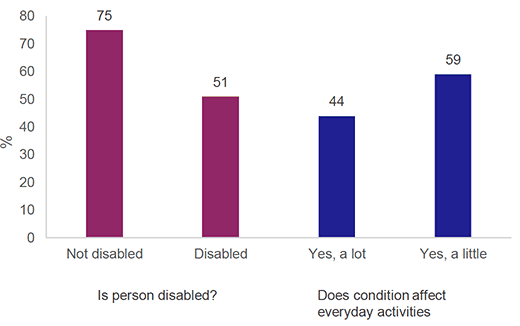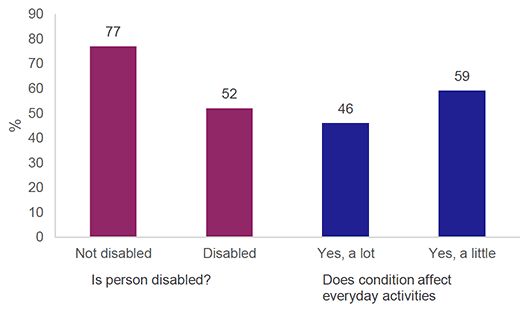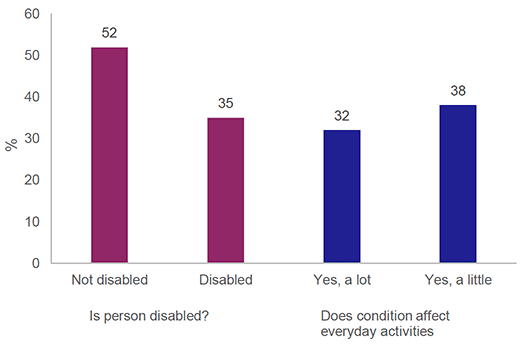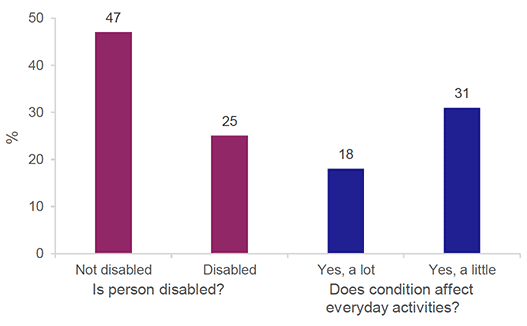Car Travel
Car Travel
Driving Licence
Disabled people are less likely to possess a driving licence drive than those who are not disabled. (51% compared to 75%). [Figure 20]
Those whose condition reduces their ability to carry out day to day activities a lot are less likely to have a licence than those whose condition affects activities a little (44% compared to 59%). [Figure 20]

There are fewer licence holders for disabled people with all particular conditions than for those not disabled. Driving licence ownership was particularly low for disabled people with learning or behavioural problems (14%), epilepsy (21%), difficulty seeing (26%) and speech impairment (26%).
Household car access
Disabled people are less likely to have a car available to their household than non-disabled people (52% compared to 77%). [Figure 21]
46% of those whose condition reduces their ability to carry out day-to-day tasks a lot have no access to a car, compared to 59% of those whose ability to carry out day-to-day tasks in affected a little. [Figure 21]

Age and income are likely to be factors in whether someone owns a car. But even when comparing only people in a household on a low income (in the lowest 30 per cent of incomes) and aged under 60, disabled people are less likely to have access to a car (35%) than those not disabled (52%).
Those with a condition that affects everyday activities a lot on low household incomes are least likely to have access to a car (32%), compared to 38% of those whose everyday activities

Frequency of driving
People who are disabled are less likely to drive every day than those who are not (25% compared to 47%). [Figure 23]
Those whose condition reduces their ability to carry out day to day activities a lot are less likely to drive every day than those whose disability only affects activities a little (18% compared to 31%). [Figure 23]
For all limiting health conditions, daily driving is less frequent than for people without a limiting health condition. The least frequent drivers are disabled people with learning or behavioural difficulties (6%), a speech impairment (7%), difficulty seeing (8%) and epilepsy (9%).
